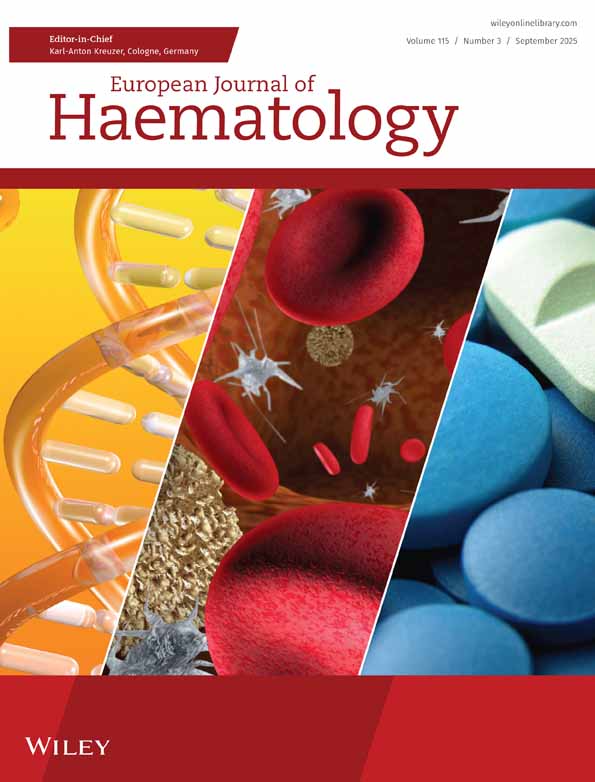The predictive value of megakaryocytic and erythroid colony formation and platelet function tests on the risk of thromboembolic and bleeding complications in essential thrombocythaemia
Abstract:
The predictive value of spontaneous in vitro colony formation of megakaryocytic and erythroid progenitors (154 patients), and defective platelet aggregation responses (55 patients) on the risk of thrombohaemorrhagic complications in patients with essential thrombocythaemia (ET) was evaluated retrospectively. In the in vitro cultures of haematopoietic progenitors, 114/154 patients (74%) showed either spontaneous megakaryocytic or erythroid colony formation or both. Forty-three per cent of patients with any spontaneous colony growth and only 20% of those without this phenomenon had an arterial thrombosis at diagnosis or during the follow-up (P = 0.02). In the whole patient group neither spontaneous megakaryocytic nor spontaneous erythroid colony formation alone predicted the risk of arterial thrombosis. In patients younger than 45 yr of age, the prognostic value of spontaneous megakaryocytic growth was statistically significant: 44% of the patients with spontaneous megakaryocytic colony formation, but only 14% of those without it, experienced arterial thrombosis (P = 0.04). The presence of spontaneous colony formation had no effect on the risk of bleeding complications. Forty-one of the 55 patients (75%) showed abnormalities in the platelet aggregation responses. There was no statistically significant correlation between the platelet function response and the risk of bleeding or thrombotic complications. No correlation was found between the platelet aggregation responses and the presence of spontaneous colony growth. In conclusion, spontaneous colony formation indicated an increased risk of thrombohaemorragic events but the platelet function test had no predictive value for these complications.




